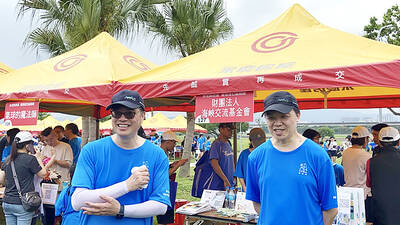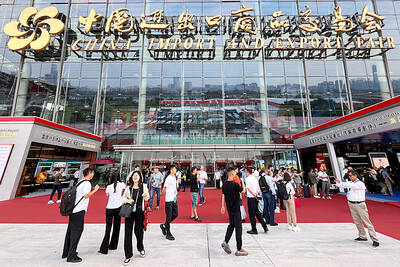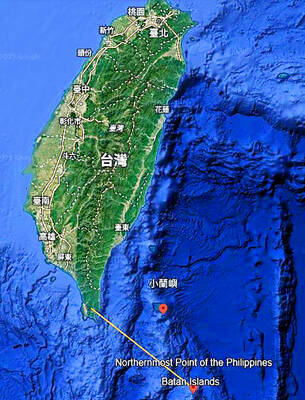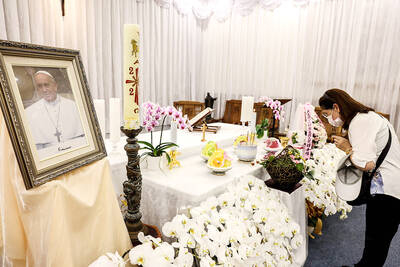Samsung Electronics Co said yesterday that a liquid-crystal-display (LDC) production line it plans to build with Japan's Sony Corp will have a capacity similar to an already existing facility that makes 50,000 glass sheets a month.
The two companies formed a joint venture called S-LCD in April 2004. Last August, they began shipping panels for large flat-screen TVs from its 1.8 trillion won (US$1.9 billion) eighth-generation line, called 8-1.
"The 8-2 LCD line's production capacity will be similar to that of the 8-1 line," said Cho Yeong-duk, vice president of Samsung's LCD business, referring to the previous line set up by the joint venture that makes 50,000 sheets a month.
Eight 46-inch or six 52-inch TV panels can be cut from each sheet, which measures 2,200mm by 2,500mm.
Also yesterday, Japan's Nikkei Shimbun reported that Sony and Samsung have reached a basic agreement to invest ¥200 billion (US$1.9 billion) in the second line.
Cho said the "deal is not finalized yet," but added that the line was expected to cost 1.8 trillion won or about ¥200 billion.
He had told Dow Jones Newswires last week that Samsung and Sony -- which compete in the global home appliances and consumer electronics market, including LCD TVs -- are in the final stages of talks that have been going on since August about their South Korean joint venture to set up a second eighth-generation LCD line.
Cho said last week that Samsung and Sony will likely invest a similar amount of money in the second line.
His comments followed an announcement by Sony that it would take a one-third stake in Sharp Corp's US$3.5 billionLCD plant in Japan to meet rising demand for flat-screen TVs.
Meanwhile, Pioneer Corp is reviewing its plasma display business, a company official said yesterday, while Japanese media reports said the company plans to stop producing them.
Ema Suzuki, a spokeswoman for the Tokyo-based maker of high-end audio equipment, said the firm's plasma display business is suffering from sluggish growth and that it is reviewing the business.
Her comments came as the Nikkei Shimbun reported yesterday that Pioneer is finalizing plans to withdraw from producing plasma panels as early as this year and procure panels from Matsushita Electric Industrial Co, which has the world's largest market share. Kyodo news agency carried a similar report.
The spokeswoman said no decision had been reached as of yesterday, adding that Pioneer president Tamihiko Sudo will unveil business plans on Friday at a news conference.
Nikkei said that the company had originally planned to ship 720,000 plasma panel TVs for the latest fiscal year, but later revised the plan to 480,000 amid sluggish sales. Pioneer's plasma TV business is expected to post ¥10 billion in deficit, the report said.
Last year, Pioneer announced a capital and operations tie-up with another electronics maker Sharp Corp. The alliance allows Pioneer to procure Sharp's LCDs.
Nikkei said that Pioneer will shut down one of its three production sites in Japan for plasma displays as early as this year and that the remaining two factories will focus on assembling TVs.

SECURITY: As China is ‘reshaping’ Hong Kong’s population, Taiwan must raise the eligibility threshold for applications from Hong Kongers, Chiu Chui-cheng said When Hong Kong and Macau citizens apply for residency in Taiwan, it would be under a new category that includes a “national security observation period,” Mainland Affairs Council (MAC) Minister Chiu Chui-cheng (邱垂正) said yesterday. President William Lai (賴清德) on March 13 announced 17 strategies to counter China’s aggression toward Taiwan, including incorporating national security considerations into the review process for residency applications from Hong Kong and Macau citizens. The situation in Hong Kong is constantly changing, Chiu said to media yesterday on the sidelines of the Taipei Technology Run hosted by the Taipei Neihu Technology Park Development Association. With

CARROT AND STICK: While unrelenting in its military threats, China attracted nearly 40,000 Taiwanese to over 400 business events last year Nearly 40,000 Taiwanese last year joined industry events in China, such as conferences and trade fairs, supported by the Chinese government, a study showed yesterday, as Beijing ramps up a charm offensive toward Taipei alongside military pressure. China has long taken a carrot-and-stick approach to Taiwan, threatening it with the prospect of military action while reaching out to those it believes are amenable to Beijing’s point of view. Taiwanese security officials are wary of what they see as Beijing’s influence campaigns to sway public opinion after Taipei and Beijing gradually resumed travel links halted by the COVID-19 pandemic, but the scale of

A US Marine Corps regiment equipped with Naval Strike Missiles (NSM) is set to participate in the upcoming Balikatan 25 exercise in the Luzon Strait, marking the system’s first-ever deployment in the Philippines. US and Philippine officials have separately confirmed that the Navy Marine Expeditionary Ship Interdiction System (NMESIS) — the mobile launch platform for the Naval Strike Missile — would take part in the joint exercise. The missiles are being deployed to “a strategic first island chain chokepoint” in the waters between Taiwan proper and the Philippines, US-based Naval News reported. “The Luzon Strait and Bashi Channel represent a critical access

Pope Francis is be laid to rest on Saturday after lying in state for three days in St Peter’s Basilica, where the faithful are expected to flock to pay their respects to history’s first Latin American pontiff. The cardinals met yesterday in the Vatican’s synod hall to chart the next steps before a conclave begins to choose Francis’ successor, as condolences poured in from around the world. According to current norms, the conclave must begin between May 5 and 10. The cardinals set the funeral for Saturday at 10am in St Peter’s Square, to be celebrated by the dean of the College